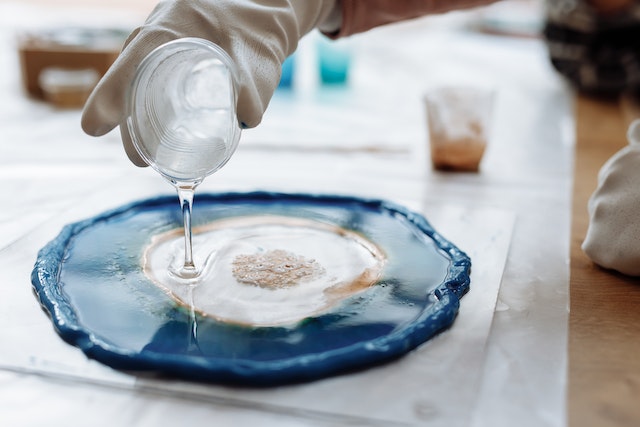Commercial and industrial spaces rely heavily on flooring selection for optimal use of space, with numerous options each providing distinct advantages and disadvantages.
Epoxy and PU resin types are two of the most frequently utilized resin types used for industrial flooring applications. While neither option necessarily outshines another, selecting the appropriate option depends on your intended use of it.
Versatility
Best Epoxy Flooring Services In Coimbatore provide end users, architects, and designers with plenty of versatility when choosing flooring options for commercial spaces that need both hard-wearing floors that also project brand identities or convey specific design schemes. This makes these systems perfect choices.
Epoxy is a thermosetting polymer that bonds well to concrete surfaces and can be applied directly over old or newly laid flooring, without the need for primer coat. Epoxy provides a durable self-leveling coating which can hide cracks while giving surfaces a smooth, polished look.
thermosetting resins are frequently preferred over aliphatic coatings due to their durability and higher UV exposure resistance, providing increased scratch and impact resistance against scratches as well as higher traffic volumes. They also tend to last longer without losing quality over time.
PU is an inert thermoset resin, making it an excellent choice for spaces exposed to high temperatures such as freezing chambers or cold storage facilities where temperatures can drop as far as -30C (-22F).
Epoxy and PU differ significantly in that epoxy provides more flexible coating that can withstand temperature extremes better – this feature makes epoxy an attractive choice for projects such as ice-free freezers or subzero indoor cooling applications.
PU floors offer added advantages when used for food processing or biomedical facilities, due to their resistance to natural ingredients found in dairy products like lactic acid. They’re often the go-to choice.
As it can withstand chemical runoff and spills without being damaged by them, its resistance makes it an obvious choice in these settings. Furthermore, epoxy provides no such assurances against chemical damage to floors.
This feature can be especially advantageous in industries that use acids in large amounts, like food and beverage production or healthcare environments where disinfectants or sanitizers may be present.
PU flooring can also be installed over existing surfaces and is often the choice of automotive garages or car parking decks to create a slip-resistant surface for both cars and pedestrians, which is especially beneficial in multi storey car parks.
Durability
Epoxy and PU flooring systems are both constructed to be extremely hardwearing, weatherproof and comfortable underfoot. Both options offer attractive finishes as well as functional benefits, providing endless aesthetic choices and protection from extreme temperature changes and chemicals exposure.
Both epoxy flooring and laminate are two component systems consisting of a resin and hardener that, once mixed together, undergo stoichiometric curing to form an impervious, seamless coating. However, both have specific applications and benefits.
PU floors stand out by being significantly more durable and capable of withstanding harsh industrial environments, including intense impacts, heavy loads, chemicals and rising moisture. As such, they make them an excellent choice in facilities with heavy traffic where stress may be put upon the floors.
PU is more resistant to extreme temperatures, including thermal shock. This quality makes PU ideal for areas subjected to regular high temperatures – such as food and beverage facilities where hot substances could spill onto the floor.
Another key advantage of polyurethane (PU) coatings is their inherent elasticity, which allows them to adapt to minor movements of concrete substrates, helping bridge any cracks found within existing concrete. This feature makes PU particularly helpful for filling cracks in existing concrete.
Epoxy can also withstand ultraviolet damage more effectively, which may cause discoloration if exposed directly to sunlight. While this could simply be cosmetic issues, discoloration could also indicate that either the epoxy is substandard or that its installation was performed inadequately.
Make sure not to rush any job and attempt to apply multiple coats of epoxy quickly as this could result in air pockets in the finished product. Rushing will lead to bubbles and air pockets becoming visible within your finished product, potentially creating further complications down the line.
When using epoxy to repair concrete surfaces, it is crucial that enough time be allotted for drying and curing before any further work can commence. Furthermore, because epoxy isn’t self-leveling flooring solution it may require filling any divots or cracks before curing can begin in full.
Chemical Resistant
Epoxy and PU flooring offer a durable, chemical-resistant surface suitable for daily traffic, heavy machinery use and high impact environments – making them an excellent solution for commercial and industrial facilities that need something that can withstand even the most challenging of circumstances.
Epoxy and PU floors are extremely easy to keep clean and maintain, as well as being resistant to abrasion and scratching; making it simple to ensure they remain in great condition over the years.
Both types of flooring systems offer various colors, styles and decorative options; making it easy for you to find something suitable for your unique space. There are some distinct differences between them though so it is wise to compare their advantages and disadvantages before making a final decision.
Polyurethane flooring systems tend to be softer and more elastic than epoxy coatings, enabling it to better withstand scratching and wear – perfect for areas where heavy equipment or machinery frequently move across the floor. Furthermore, PU systems have exceptional heat, cold, and thermal shock tolerance – meaning they won’t expand and contract due to extreme temperatures that would normally lead to cracks in other flooring materials.
Food and beverage facilities that produce and distribute milk, cheese and other dairy products frequently need flooring that can withstand organic acids. A food processing facility involved with producing or distributing these items may prefer choosing a polyurethane system over epoxy flooring as it’s more resistant.
Polyurethane coatings usually last longer than their epoxy counterparts – some models even ten years or more in some instances! This makes a noticeable difference when looking at both initial investment and maintenance costs of each system.
Chemical resistance of epoxy resins depends upon three key factors, which include its structure, crosslinking density, and degree of cure. Molecular modeling as well as analytical techniques like differential scanning calorimetry, Raman spectroscopy, and dynamic mechanical analysis help shed light on these aspects.
Easy to Clean
If you prefer flooring that’s easy to maintain and keep looking their best, epoxy or PU flooring could be your perfect solution. Both can be cleaned easily using simple tools and procedures, making these floor types simpler than other options to maintain in good condition.
Epoxy floor coatings are highly resilient, hard-wearing floor treatments designed to withstand high traffic environments for extended periods. Being chemical resistant makes epoxy an excellent choice in food processing facilities as well as other areas with frequent exposures to corrosive liquids or alkalis.
Clean your epoxy floor of most spills and stains using warm or hot water mopping and soft brush, before switching to using a clear ammonia/water mix at approximately one-half cup per gallon as a second mop for any remaining dirt or grime.
Scrubbing may be your best solution to stubborn stains; use a soft kitchen sponge or deck brush soaked in Simple Green solution (approximately 1 part cleaning solution per 8 parts water). If the stain still persists after this initial effort, warm/hot water may help.
As soon as vehicles or heavy machinery begin moving over your epoxy floor, it’s essential that it remain free from dirt or any grit that could scratch its surface.
Clean floors are key to protecting their durability and prolonging their lifespan, and a vacuum cleaner equipped with a soft brush attachment is an invaluable way to do just that. A regular maintenance schedule should include vacuuming to remove dirt and grit.
Clean up oily or chemical spills immediately to avoid serious problems; leaving these on the floor for too long could have serious repercussions. A spray degreaser like Simple Green provides an all-purpose cleaner solution, capable of quickly eliminating most greasy or oily spills from surfaces.
If there are rust spots or other stubborn stains on your epoxy floor, gently scrub them using a soft kitchen sponge or soft brush. Alternatively,you can hire an pro polyurethane flooring company like texel agency.






